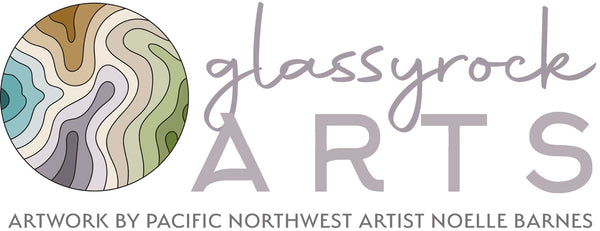
How to Care for Your Stained Glass Artwork
Have you recently bought a piece of stained glass artwork, and you're wondering how to care for it? Here are a few tips on how to do that, depending on how your piece has been created and constructed. And if you haven't already heard me wax on about the virtues of adhesive hooks vs. suction cups, there's a blog post for that.
MATERIALS
- Soft bristle brush
- Dish soap
- 0000 Steel Wool or Magic Eraser (silver patina pieces only)
- Lint-free cloth
SAFETY
The most important thing to remember about stained glass is that you're dealing with two relatively unsafe materials - glass, and lead (in most cases, unless specified by the artist that the piece is lead-free; if not specific, assume the piece contains lead). Glass is breakable - your piece is therefore fragile and delicate, and should be handled as carefully as you would handle a drinking glass or glass vase or other piece of glass in your home.

Lead is trickier. My rule of thumb while handling lead is, once you've handled your stained glass piece, thoroughly wash your hands with dish soap, and given them a good scrub - especially if you can see grey lead on your hands (it looks like pencil lead or charcoal, if you remember that feeling from when you might have taken an art class). Don't handle food unless you've thoroughly washed your hands.
Above all, please remember - stained glass artwork is never meant for children.
BUFFING THE SOLDER - IS THERE PATINA?

Eventually, you might notice that the piece needs a little cleaning. But before you buff and clean your piece, one really important consideration - does your piece have patina on the solder lines? That is, are the lines that connect the glass silver (no patina) or colored (black or copper)?
If they are silver, you can buff the solder using 0000 steel wool, until you see a nice shine, and if there is lead came used either on the inside or outside of the piece (these will typically be thicker, more regular lines that are connected at joints), you can also clean that up with the steel wool. If you don't have steel wool, you can also use a Mr. Clean Magic Eraser or equivalent for this task.
If the lines are black or copper, DO NOT use the steel wool or magic eraser on them - this will strip the color right off. Skip to the CLEANING section!
CLEANING
If your piece has silver solder and you've buffed the lines and edges, you're ready to clean. If your piece has patina on those lines, you're also ready! No buffing recommended on those because the patina can strip right off.

First, make sure you have a soft bristle brush - like, really soft, one that you would use on your face if you had really sensitive skin, that soft. Using cool water and the dish soap, later up the piece using the brush, being careful to remove any debris that might have been left behind if you're cleaning a silver piece and you used steel wool or a Magic Eraser.
Once you're sure the piece has been cleaned, and it looks shiny and new again, use the lint-free cloth to gently dry the piece. You can then hang it to dry completely in a safe place until it is done - do not use heat to dry the piece as that can cause the lead to unform.
Questions? Let me know!
